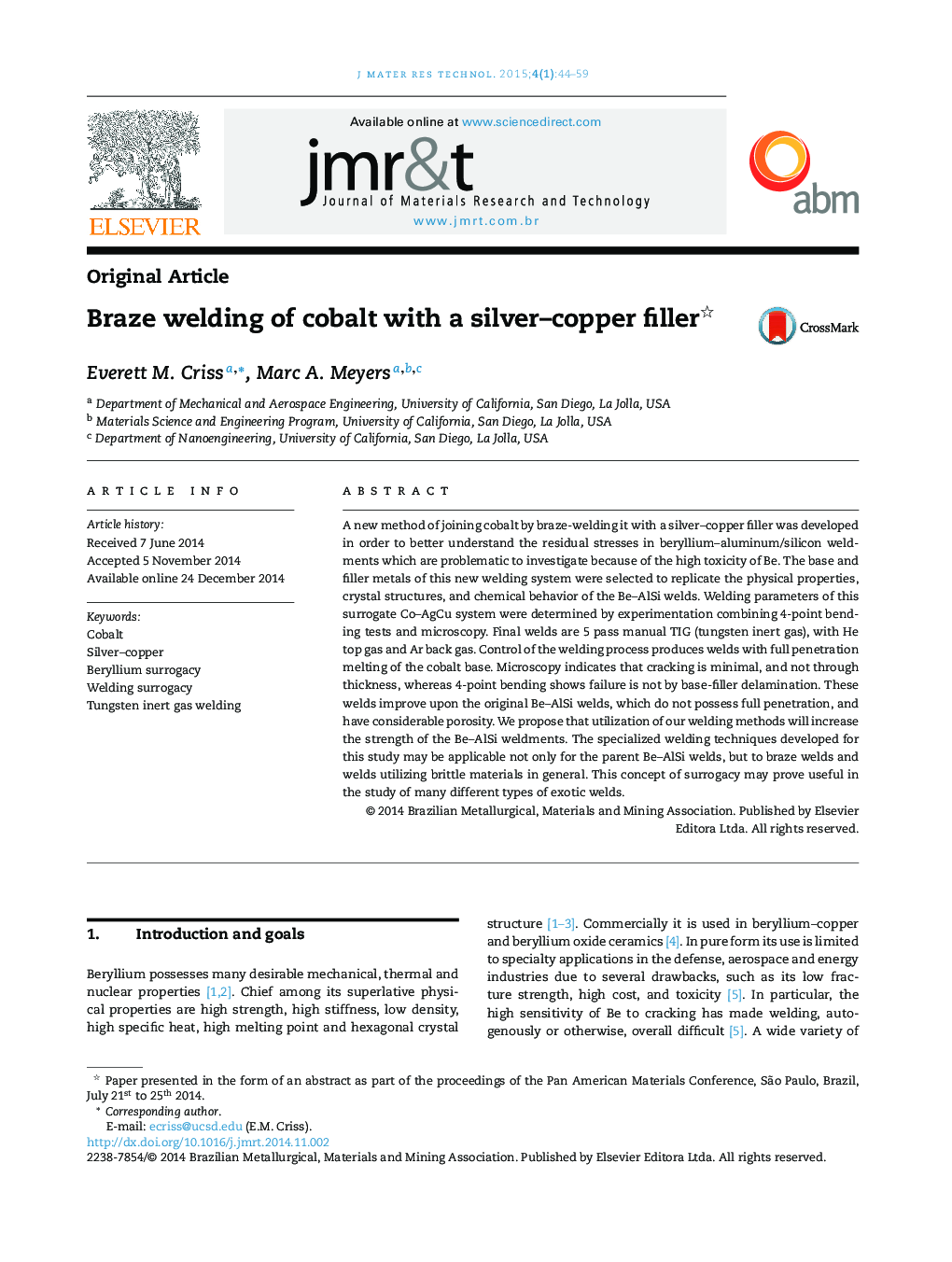| Article ID | Journal | Published Year | Pages | File Type |
|---|---|---|---|---|
| 1479846 | Journal of Materials Research and Technology | 2015 | 16 Pages |
A new method of joining cobalt by braze-welding it with a silver–copper filler was developed in order to better understand the residual stresses in beryllium–aluminum/silicon weldments which are problematic to investigate because of the high toxicity of Be. The base and filler metals of this new welding system were selected to replicate the physical properties, crystal structures, and chemical behavior of the Be–AlSi welds. Welding parameters of this surrogate Co–AgCu system were determined by experimentation combining 4-point bending tests and microscopy. Final welds are 5 pass manual TIG (tungsten inert gas), with He top gas and Ar back gas. Control of the welding process produces welds with full penetration melting of the cobalt base. Microscopy indicates that cracking is minimal, and not through thickness, whereas 4-point bending shows failure is not by base-filler delamination. These welds improve upon the original Be–AlSi welds, which do not possess full penetration, and have considerable porosity. We propose that utilization of our welding methods will increase the strength of the Be–AlSi weldments. The specialized welding techniques developed for this study may be applicable not only for the parent Be–AlSi welds, but to braze welds and welds utilizing brittle materials in general. This concept of surrogacy may prove useful in the study of many different types of exotic welds.
